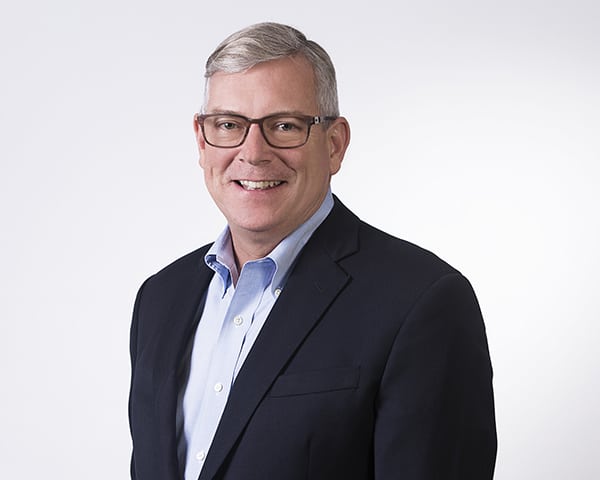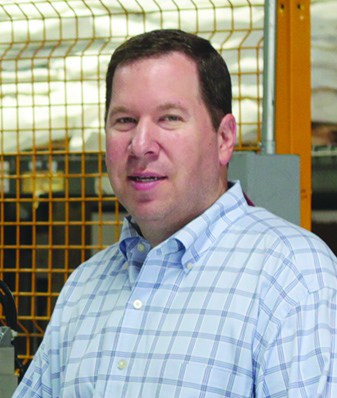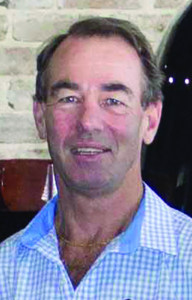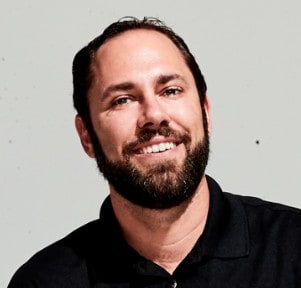
As businesses reopen after lockdown due to the global novel coronavirus, bedding industry leaders reflect on how their processes have changed, what they’ve learned and how they are keeping employees safe
The global COVID-19 pandemic has rocked the mattress industry like no other event in recent history. We interviewed domestic and international manufacturers and suppliers to assess how their operations are faring, what changes they’ve made and what lessons they’ve learned thus far.
We queried them in late May and early June, and have included a sampling of responses here.
1. Since the pandemic began, has your company switched from producing finished consumer mattresses or bedding supplies to making personal protective equipment or hospital mattresses?

“At the height of the pandemic, we pooled resources with our network of licensees to manufacture masks to help fill the increased demand. Now that most of our factories are back open, we’ve shifted back to making mattresses.”
— Nick Bates, president of Spring Air International,
a Boston-based licensing group

“We were pleased to support the COVID-19 relief efforts by mobilizing our manufacturing network to produce and donate thousands of Serta Relief Beds to hospitals, communities and organizations in need, in partnership with Relief Bed International. We also built on this commitment with the launch of ‘Stay Home. Send Beds,’ a program that facilitates consumer donation of relief beds to organizations in need, in the city of the consumer’s choosing. On a smaller scale, we utilized our manufacturing network to produce face masks, primarily to protect our own employees in factory operations across the U.S. and Canada.”
— David Swift, chair and chief executive officer of Serta Simmons Bedding LLC, a bedding major with headquarters in Atlanta

“We joined the COVID response consortium and are helping produce face masks for the Federal Emergency Management Agency, and we’ve picked up several new opportunities to cut and sew hospital gowns. We also partnered with SSB and Relief Bed International to make nylon hospital mattress covers.”
— Lila Walker, president of Jomel Seams Reasonable, a cut-and-sew division of Jomel Industries, based in Hillside, New Jersey

“Our company completely closed its operations on March 23 and reopened June 2. As most of our employees take public transit to get to work, we decided as a team to shut operations and furlough the employees for their health and safety. However, we did donate fabric to a local maker of masks, whom, in turn, donated all proceeds of sales to the food bank.”
— Valerie Stranix, general manager of Marshall Mattress Ltd., a producer based in Toronto

“Our employee partners immediately began investigating how we might help. Since the crisis began, we’ve learned of several ways our employees have used their ingenuity and resourcefulness to assist with the response to COVID-19. Between our Peterson Chemical Technology facility producing hand sanitizer, Genesis Seating creating cloth face masks and our Hanes facilities supplying materials for use in medical mask production, we’re proud of how our employees have stepped up and helped in this time of need.”
— Eric Rhea, vice president and president of the Bedding Group for Leggett & Platt Inc., based in Carthage, Missouri
2. If your company suspended or shifted production, have you returned to normal operations?

“We never really stopped making our core products for the mattress industry. Many of our key customers continued to sell through the quarantine time via e-commerce.”
— Adam Lava, owner of A. Lava & Son. Co., a Chicago-based supplier and manufacturer of bedding components, cut-and-sew services and finished mattresses

“Fortunately, our two largest retail customers, Harvey Norman and Forty Winks, both chose to remain open during the self-isolation period, despite many of their competitors choosing to close their stores. In New Zealand, the government decided to introduce a ‘full lockdown,’ so our business there was completely closed for nearly six weeks and only recently reopened for production.”
— Allyn Beard,director of A.H. Beard, a mattress manufacturer based in Padstow, Australia

“Production of consumer products never stopped, and most Tempur Sealy manufacturing facilities have remained open throughout.”
— Steve Rusing, executive vice president and president of U.S. sales for Tempur Sealy International Inc., a mattress major with headquarters in Lexington, Kentucky

“Southerland continued to produce consumer bedding at all times. Sales declined 25% to 40% of expected sales for two to three weeks. Currently (early June), sales have returned to expected sales for this time of year.”
— Bryan Smith, president and CEO of Southerland Inc., a bedding manufacturer and licensing group headquartered in Nashville, Tennessee

“We have started to produce mattresses once again (the main part of our business). We returned the second week of April with a very limited staff to manufacture products for online and overseas orders. We initially started with fewer than 10 in the factory, but are now (at the end of May) up to nearly 50%.”
— James Appleyard, sales director for Deluxe Beds Ltd., a mattress manufacturer based in Huddersfield, England

“We are back to making consumer bedding. We never fully stopped producing, just reduced the staff and made fewer products. Now we’re ramped back up and ready to go.”
— Shaun Pennington, president of Diamond Mattress, a bedding manufacturer based in Compton, California
“In April, business really bounced back, with the demand for e-commerce mattresses spiking, so we’ve still been producing a lot of zippered mattress covers. We’re getting calls from customers, colleagues in the business, etc., asking for additional production, and we’ve had to turn away many requests due to being at max capacity.” — Walker, Jomel Seams Reasonable
“(In early June), we reopened nearly all of our 27 manufacturing facilities across the U.S. and Canada to support ever-increasing consumer demand. In fact, we saw double-digit growth over the Memorial Day weekend and significant growth in e-commerce channels for our traditional retailers, as well as on our own sites, TuftandNeedle.com, Beautyrest.com and Serta.com.” — Swift, SSB
3. What, if any, changes have you made to your manufacturing/production facilities to protect workers? How long do you expect these procedures to be in place?
“Southerland has instituted many procedures to help mitigate the risk to workers: Currently, we do not allow any visitors to our plants. This includes salesmen, customers and vendors. All persons entering a facility must have their temperature checked; we require all persons in the facility to wear a mask; we have tried to make sure all jobs are social distanced; we have staggered break times and lunch times to social distance employees during breaks; and we have set up work station and break area cleanings multiple times during each shift and a mandatory wipe down of all workstations at the end of a shift. We expect these procedures will stay in place until there is a vaccine or a treatment that mitigates the risk to employees.” — Smith, Southerland
“We established a leadership guiding coalition tasked with identifying new guidelines and best practices that would help to promote the health and safety of all of our employees, our customers’ employees, and suppliers’ employees. These coalitions then focus on protocols around social distancing, facility layouts and logistics. They provide a communication process, including a training and visual management system to ensure all associated personnel clearly understand the processes. And lastly, we are implementing a governance process to ensure we are in compliance at all workplaces (both plants and offices) throughout our organization. All of this is focused to support the branch response teams, which are critical in ensuring we effectively take care of our people.” — Rhea, L&P
“Employee health and safety is one of our top priorities. Following the guidance of the U.S. Centers for Disease Control and Prevention and local and state health officials, the company has instituted significant safeguards at our plants and corporate offices. New processes include mandatory mask use, closing of common areas, temperature check upon arrival, increased cleaning of buildings, encouraging teleconferencing instead of in-person meetings, instituting work-from-home policies for some functions, limiting travel, strict adherence to social distancing, and increased signage regarding hand sanitation and a healthy workplace.” — Rusing, Tempur Sealy
“We have made many changes to our facility and the way we operate. All employees have to wear masks, and we are checking temperatures when employees come to the factory. We have set up sanitizing stations around the factory, and we have changed the way we have meetings, lunch and breaks, adhering to CDC social distancing guidelines. We honestly have no idea how long we will run our business this way, probably until we get new guidelines from the CDC or the state of Illinois.” — Lava, A. Lava & Son
4. As the economy reopens and we move forward, do you expect consumer demand for certain products to change? If yes, how so?
“As a manufacturer of luxury products exclusively ($2,000 and above), we expect our target consumer to continue to shop for our type of product, by appointment at select retailers. We expect a strong sentiment about ‘buying local’ among consumers, as well. We also anticipate boxed bed sellers to continue to thrive and capture market share as many consumers will still resist going out to shop in physical stores for the next few months.” — Stranix, Marshall Mattress
“I think we will have a better idea about demand by the end of June after the pent-up demand subsides some. Right now, we are seeing lower priced goods selling better. Certainly, boxed beds purchased online and drop-ship delivery have advantages in terms of minimizing physical contact. I think antimicrobial bedding will become more important going forward, but that may affect the top-of-bed category (sheets, pillows, and mattress and pillow protection) more than the mattress itself.” — Pennington, Diamond Mattress
“I think there will be an initial surge when retailers open their doors for the first few weeks, but this may be negated by a drop in sales if not all companies take on full staff once the U.K.’s furlough payments reduce from 80% and then finish. Only then will we start to see the full scale of COVID’s economic effects and get a real insight into how long it will take the U.K. and the world economy to recover from it.” — Appleyard, Deluxe Beds
“Consumers are still going to buy beds. They are likely to look more seriously at adding mattress protectors to their purchase in the world of COVID-19. Members of our retail network that have already opened are doing a ton of business. Consumers who are out shopping are ready to buy. Others are more cautious about going into stores and are turning to online shopping, which bodes well for boxed beds that can easily be delivered or picked up.”— Bates, Spring Air
“Fortunately, we have already seen a move to higher value products, plus, there has been a groundswell of support for ‘Australian Made.’ Fortunately, both of these trends favor A.H. Beard products in the marketplace.” — Beard, A.H. Beard
5. Although we are still trying to understand the pandemic’s long-term effects on our economy and business practices, what lessons have you learned thus far that will carry your business forward?
“The biggest takeaway for me is that things can change at any moment, and we should never, ever get complacent in the now. Always plan for the future.” — Bates, Spring Air
“The pandemic has put our business and most other businesses under significant distress. What you find in most trials is that what does not kill you will make you stronger. I believe that is true in this case for us. Our team has come together with the focus of trying to get better each day, and we started by holding daily/weekly conference calls with each department of our business. By ‘over communicating,’ we have become better at many facets of our business and learned about other areas that we need to improve. We used the downtime during the pandemic to clean, organize and plan our future production. The main lesson is that there is no substitute for communicating and planning at all levels of management.” — Smith, Southerland
“I think all businesses have learned a number of lessons from this pandemic. The one that stands out the most for me was our team’s ability to quickly adapt to a fully remote work environment in a way that allowed us to continue moving the business forward without interruption. I believe this will have a profound impact on how we work together in the post-COVID environment.” — Swift, SSB
“React quickly, but patiently, to shifts in the market. We were lucky we were able to pivot quickly, but in the rush, mistakes can be made with adjusting equipment, supplier relationships, etc.” — Walker, Jomel Seams Reasonable
“A.H. Beard will be evaluating our potential reliance on some of our raw materials from overseas countries and will look to increasing more local supply where possible.” — Beard, A.H. Beard
“It has forced us to be more ruthless about only accepting orders that are profitable and based on what our key strengths are. It’s nothing we shouldn’t have been doing in any case, but this gave us the extra focus we needed once we started to accept new orders after being on lockdown.” — Appleyard, Deluxe Beds
“One of our strengths is our organization’s ability to improvise, adapt and overcome when faced with adversity. As a result of the abrupt change in consumer behavior, we had to think differently about how to support our retailers. We developed and shared a new Clean Shop Promise Program with in-store and digital assets, as well as guidelines for making consumers more comfortable shopping at retail. The program has resonated well with our customers. We also introduced a Retailer Affiliate Program that gave our customers access to our suite of compressed products (Tempur-Cloud, Cocoon, Sealy) and marketing assets to enable them to drive sales with no investment in inventory required.” — Rusing, Tempur Sealy
“Marshall Mattress is 120 years old this year, and we have lived through the pandemic of the early 1900s, two world wars and countless other economic challenges. We have learned to remain lean and flexible and to stay true to the high-quality products made in our Toronto factory. Having a smaller team means communication is fast and concise, and keeping a social distance is easier. The ability to multitask ensures we can protect the jobs that make our company run efficiently.” — Stranix, Marshall Mattress
“I am not sure how much we have learned yet. I think everyone is reacting still and trying to come up with new solutions. What this has taught me most is that you need to have people who are problem solvers in your organization, not people who just point out the problems.” — Lava, A. Lava & Son
“Diamond Mattress has roots in one of this country’s most challenging periods in history, the Great Depression. My great-grandparents lost their Oklahoma farm in the Dust Bowl of the 1930s and moved to Los Angeles, where they started making box springs out of their garage. Responding well to crisis and great need is in our blood. My sister, Breana, and I are the fourth generation of a family business that has weathered storms. From a financial perspective, this pandemic has reinforced the fiscally conservative values on which Diamond was founded. It’s also brought into clear view for us that we have a dual responsibility to community (with our capabilities to manufacture essential supplies that can go directly to helping people who need them most) and to family (which includes our employees), by keeping our 80-year-old company operating, providing jobs and ensuring we weather this and any future storms.” — Pennington, Diamond Mattress
“Simply: You must be prepared to deal with change quickly, whatever that may be!” — Rhea, L&P
WEB-EXCLUSIVE CONTENT
1. What, if any, changes have you made to your HQ and offices to protect workers? How long do you expect these procedures to be in place?
“Following the guidance of the Centers for Disease Control and Prevention, and local and state health officials, the company has instituted significant safeguards at our plants and corporate offices. New processes include mandatory mask use, closing of common areas, temperature check upon arrival, increased cleaning of buildings, encouraging teleconferencing instead of in-person meetings, instituting work-from-home policies for some functions, limiting travel, strict adherence to social distancing and increased signage regarding hand sanitation and a healthy workplace.” — Rusing, Tempur Sealy International
“We are treating our office workplaces no differently than our manufacturing facilities. The appropriate personal protective equipment and cleaning procedures are consistent across all of our offices and plants. The only exception might be if there are legal mandates in different geographies that require more or limit the use of PPE than we have deemed necessary.” — Rhea, L&P
“Here in Australia, our government’s recommendations have been to self-isolate and restrict unnecessary going out. Face masks are optional, with only a small percentage of Australians choosing to wear a face mask. We have encouraged social distancing through our workplaces and also encouraged working from home where it is functional to do so. We will continue to monitor each month to decide whether to change our current work practices. Fortunately, the incidence level here in Australia is now below 0.5%, and many of our cases came as a result of overseas travelers coming into Australia. Being an island country, we were able to close our borders early, which has minimized our infection levels.” — Beard, A.H. Beard
“We continue to have our corporate staff work remotely until such time that we believe they can return to the office in the healthiest and safest way possible. Our return-to-work approach is guided by three principles: ensuring the health and safety of our people, providing flexibility for individual circumstances, and providing as much advance notice as possible. These guidelines help steer our preparations for certain essential workers to return to the office and, in the longer term, other employees, as well. We are putting processes in place for temperature and wellness checks, allowing for social distancing within conference rooms and other communal areas of the building, and ensuring we have adequate cleaning supplies and staff on hand at any given time to continually clean the building. We are also working to ensure our teams are set up for success in a remote working environment, including focusing on team engagement, consistent communication, and providing tools and resources to help them adjust to this different way of working.” — Swift, SSB
“We have done the same in the office as we have in the factory: We have made many changes to our facility and the way we operate. All employees have to wear masks, and we are checking temperatures of employees. We have set up sanitizing cleaning stations, and we have changed the way we have meetings, lunch and breaks, adhering to CDC social distancing guidelines. We honestly have no idea how long we will run our business this way, probably until we get new guidelines from the CDC or the state of Illinois.” — Lava, A. Lava & Son
“We have provided gloves (if necessary) and masks, as well as increased the number of hand sanitizing stations, and are regularly wiping surfaces down in the factory and the office. We received legal advice and had each employee risk assessed prior to returning. I expect that these (measures) will be in place for at least two to three months, but will always be based on the latest U.K. government advice. Also, some people are working from home, but we don’t expect for this to be permanent, and they will increase their number of hours/days in the office as their confidence increases when the COVID infection rate reduces.” — Appleyard, Deluxe Beds Ltd.
“Employees that can work from home (administrative) have been encouraged to do so. However, for essential employees who have to be in the office, we have extensive safety measures to protect our employees. Every morning our plant managers take temperatures, and all our employees wear face masks (some made by us and some N95s we’ve purchased). We have hand sanitizing stations all over. (Facilities) are cleaned with disinfectant on a regular basis. I personally work remotely from home, and used to travel extensively, so my significant change is being grounded for a while. My partners have also stopped traveling and have been focusing their efforts on improving our production and output.” — Walker, Jomel Seams Reasonable
2. What changes, if any, have you made to your processes for delivering products to your customers?
“All Southerland drivers wear masks when delivering product. We have provided gloves and hand sanitizer for driver use. These procedures are intended to mitigate the risk for both the driver and the customer.” — Smith, Southerland
“Delivery drivers are wearing masks and gloves, and sanitizing regularly. We ask them not to go inside stores, and they are changing gloves after every delivery.” — Pennington, Diamond Mattress
“Safety and reassurance are important at every touchpoint of our delivery process. Our delivery drivers are now wearing gloves that are changed following every stop to help them remain safe and to reassure our customers. The drivers also have hand sanitizer in the trucks, which is used before and after each stop. We are considering double bagging our mattresses for an extra layer of protection that can be removed and left outside once the product reaches its destination.” — Bates, Spring Air
“Our carriers have been briefed on each of the retailer’s expectations and protocols to deliver to the stores/ warehouses, and those include wearing masks and gloves if assisting to unload and touchless temperature readings upon arrival at some of our customers’ distribution centers. Drivers with temperatures higher than 98.6 F will be turned away.” — Stranix, Marshall Mattress
“Initially we only allowed collections or full loads only, with payment upfront to assist with cash flow. We have recently started to build up multidrop for sizable orders, but have also taken on a DHD (direct home delivery) company that can deliver smaller orders either to retailers or end users. This reduces the number of drops we will be doing at a time when not all retailers in the U.K. are open, as well as reduces our lead times as we can get the products delivered quicker using the DHD company.” — Appleyard, Deluxe Beds
“We sell our goods FOB, so our customers usually send in their specified carriers to pick up. We maintain social distancing, and sanitize surfaces after pickups or deliveries are made.” — Walker, Jomel Seams Reasonable
“We continue to be focused on uninterrupted supply to our customers. While a very positive return in demand has been welcomed, it has not been without challenges. We are limiting our employee access to our customers’ facilities. While we can control what our employees do within our facilities, we can’t control what they do outside of our operations. We are focused on making sure that we have safe practices in our plants and creating flexibility within our operations.” — Rhea, L&P
“During the height of the COVID-19 pandemic, we moved to a ‘no contact’ method for making in-home deliveries and instructed our delivery personnel to leave customer orders at the front door, in a garage, or in an alternate location that sheltered the product from inclement weather. We also discontinued pickups and product exchanges for a period of time. These processes are still in place.” — Swift, SSB
3. Given the supply chain interruptions for much of the upholstered furniture coming from Asia and the fact that the supply chain for mattresses is shorter, do you think the crisis will motivate furniture retailers to put increased effort into promoting bedding?
“Supply chain interruptions have impacted upholstered furniture coming from Asia and will impact raw materials, which are used to manufacture mattresses in the U.S. Because a large portion of mattresses are produced in the U.S., we will have the ability, with the customer’s permission, to alter components and provide replacement mattresses for the retailer to sell. Retailers will focus their efforts on what they have available to sell and on items that have the highest profit margins. Mattresses fit both requirements and will be an opportunity for the retailer to keep its business as healthy as possible during the crisis.” — Smith, Southerland
“I think the stronger furniture retailers were already promoting bedding as a key category, and the crisis will motivate them to double down on their efforts. The antidumping (and countervailing duty) petition will slow down imports for mattresses and could help retailers feel more optimistic about bedding as a category and their ability to compete with online sales.” — Pennington, Diamond Mattress
“We are seeing that furniture and bedding are both experiencing strong increases in comparative sales to the previous corresponding period. We attribute this to an increase in discretionary dollars available due to the rapid decrease in expenditures on travel, cruises, restaurants, gambling and sports.” — Beard, A.H. Beard
“Retailers continue to find Tempur-Pedic, Stearns & Foster and Sealy brands to be world-recognized with consumer-preferred products. Furniture stores, like other retailers, continue to lean into high-quality products like ours during these challenging and dynamic times as a means to convert the foot traffic that comes to their stores.” — Rusing, Tempur Sealy
“We hope that more retailers see the benefit of adding more high-quality products to their floors. We hear from consumers often about the realization they are having or have had while in quarantine about how important a clean, comfortable bed is. Consumers will want to choose very carefully where they will spend their discretionary dollars, as most have been hit financially in the last few months.” — Stranix, Marshall Mattress
“Mattresses always make retail doors swing, and because of that, retailers have always promoted them in their advertising. We offer a creative suite of advertising materials to help our partners promote Spring Air as they continue to reopen. That’s not going to change and, in fact, the American-made product will come out ahead because retailers can get it much quicker than product coming from Asia.” — Bates, Spring Air




